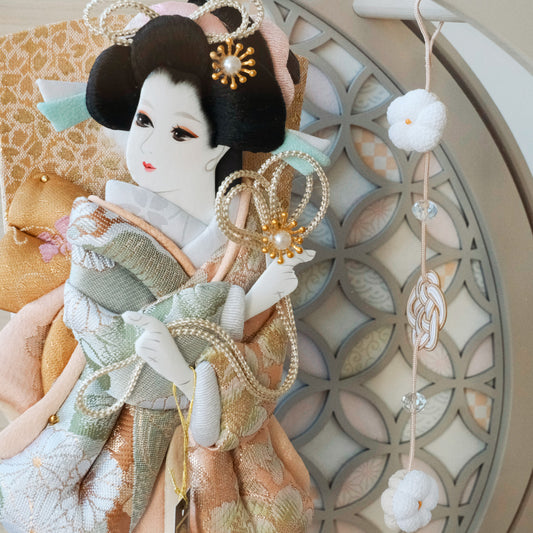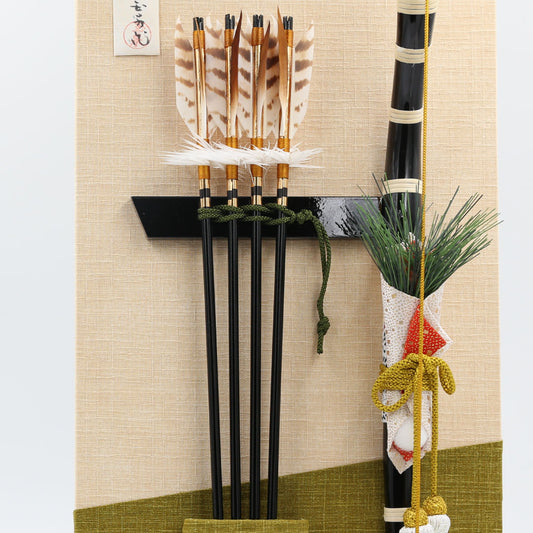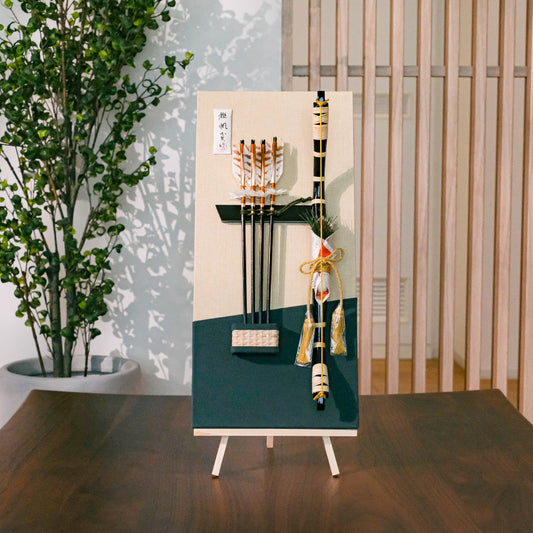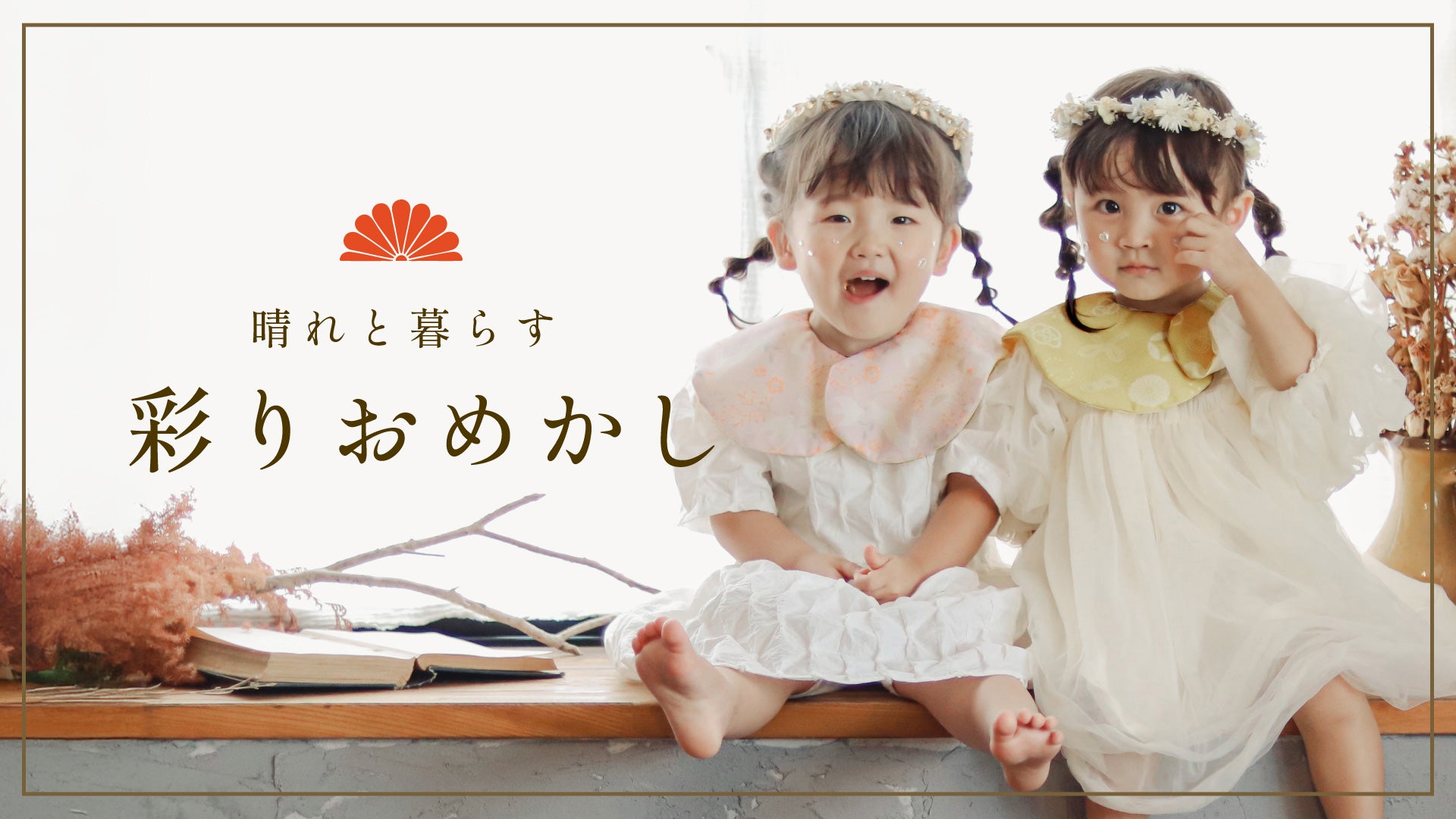Protecting your baby's first New Year
New Year's Day is said to be the oldest celebration in Japan.
Among these, the first New Year's Day a child experiences is called "Hatsushogatsu" and is celebrated with prayers for the child's healthy growth as the new year approaches.
Focusing on original selections from Sunny Living,
We carry a wide selection of special New Year's decorations that you won't find in other stores, including the popular Puca series and items by artists.
-
[Puca] HAGOITA (Puca shuttlecock)
Vendor:PucaRegular price ¥24,970(税込)Regular priceUnit price per -
[Puca] HAMAYUMI Puca's Hamayumi Bow
Vendor:PucaRegular price ¥24,970(税込)Regular priceUnit price per -
Silk embroidered name battledore decoration, maroon embroidered name flag
Vendor:晴れと暮らすRegular price ¥18,500(税込)Regular priceUnit price per -
Silk embroidered name battledore decoration, rose embroidered name flag
Vendor:晴れと暮らすRegular price ¥18,500(税込)Regular priceUnit price per -
Hagoita ball - mari - Dull pink acrylic case, pressed-paper hagoita decoration
Vendor:晴れと暮らすRegular price ¥69,000(税込)Regular priceUnit price per -
Hagoita edge - en - Greige acrylic case with pressed-paper hagoita decoration
Vendor:晴れと暮らすRegular price ¥74,000(税込)Regular priceUnit price per -
Maya's No. 13 Kujudama Battledore [White Checkered Pattern] Tsumami Zaiku Folding Screen Decoration Battledore
Vendor:晴れと暮らすRegular price ¥80,000(税込)Regular priceUnit price per -
Maya's No. 13 Kujudama Battledore [Moe] Tsumami Zaiku Folding Screen Decoration Battledore
Vendor:晴れと暮らすRegular price ¥78,000(税込)Regular priceUnit price per -
Kujudama Red (Ro) No. 10 Hagoita Folding Screen Decoration Made by Maya
Vendor:晴れと暮らすRegular price ¥47,000(税込)Regular priceUnit price per -
Kotobuki no Mai (Longevity Dance) - 10-gou Hagoita Decoration, made by Heian Dosui
Vendor:晴れと暮らすRegular price ¥58,000(税込)Regular priceUnit price per -
Wall hanging No. 15 Hamayumi bow decoration Miyabi (light green)
Vendor:玉泉Regular price ¥28,000(税込)Regular priceUnit price per -
Wall hanging No. 15 Hamayumi bow decoration Miyabi (light green)
Vendor:玉泉Regular price ¥34,000(税込)Regular priceUnit price per
Living in the Sun | Hagoita and Hamayumi Decorations for the First New Year
Q1. What is the meaning of displaying hagoita and hamayumi?
A. Hagoita and Hamayumi are traditional amulet decorations that are displayed during a baby's first New Year (Hatsushogatsu) to ward off evil spirits, bad luck, and pray for good health .
Q2. Why are hagoita and hamayumi decorated by girls and boys, respectively?
A. There is a custom of giving girls a hagoita and boys a hamayumi, with the hagoita symbolizing "repelling evil (the movement of the feathers)" and the hamayumi symbolizing "using a bow to ward off evil spirits."
Q4. Who should give the hagoita and hamayumi?
A. Traditionally, it was customary for maternal grandparents or relatives to give the gift, but nowadays, there are cases where the parents themselves prepare the gift or the cost is shared between the two families.
Q5. What are the key points to consider when choosing a hagoita or hamayumi?
A. The following points are important when making your selection:
・Size balance ・Space available for installation ・Design ・Color (does it blend in with the interior?)
・Materials, quality, and finish (something that can be beautifully displayed for a long time)
・Do you offer name tag printing or other options?
Q6. Can I have my name engraved?
A. Yes, we can engrave names on some of our hagoita and hamayumi products. By engraving your child's name or birthday, it will become an even more special commemorative ornament.
Generally, name tags and other items are displayed together.
Q7. Where is the best place to display it?
A. We recommend placing it in a space where it is easily visible to the family, such as the living room or entrance. However, it will last longer if you display it in a calm environment, avoiding direct sunlight or humid places.
Q8. Can I display hagoita and hamayumi every year?
A. Yes, you may display it every year.
Hagoita and hamayumi are amulet decorations given as gifts on the first New Year, but after the first Doll Festival, they are displayed every New Year as New Year decorations, wishing for the healthy growth of children.
Spending time decorating as your child grows will become an important tradition that marks milestones in your family life.
Q9. What should I do if the product is cracked, scratched or defective?
A. If the product is damaged during shipping or has initial defects, please contact us as soon as possible after arrival and we will exchange it. We pack the product carefully, but if anything happens, please feel free to contact us via [Contact Us] .
Q10. Until what time is it called the first festival?
A. The term "Hatsu-Sekku" refers to the first doll and festival decorations a child will ever see.
Decorations for the first New Year, including hagoita and hamayumi, are often treated as part of this.
By keeping it as an ornament for years to come, it will serve as a keepsake of your child's growth.



![[Puca] HAGOITA (Puca shuttlecock)](http://hare-kura.com/cdn/shop/files/05dd03d38923aa8785f77a4fd1f6d9f9_86ec87c5-2def-4e9f-824d-fbf56926c292.jpg?v=1699254605&width=533)
![[Puca] HAGOITA (Puca shuttlecock)](http://hare-kura.com/cdn/shop/products/pucahagoita1.jpg?v=1699254605&width=533)
![[Puca] HAMAYUMI Puca's Hamayumi Bow](http://hare-kura.com/cdn/shop/files/05dd03d38923aa8785f77a4fd1f6d9f9_6223bfe7-e41b-49c0-b532-5141fbb488a2.jpg?v=1699254317&width=533)
![[Puca] HAMAYUMI Puca's Hamayumi Bow](http://hare-kura.com/cdn/shop/files/749e17eb33f50948d95e15a7c0d6f5be_ba0d065b-8d3c-4f87-8b2f-73b70af60adb.jpg?v=1699254317&width=533)








![Maya's No. 13 Kujudama Battledore [White Checkered Pattern] Tsumami Zaiku Folding Screen Decoration Battledore](http://hare-kura.com/cdn/shop/files/hagoita_shiro_s01.jpg?v=1762842226&width=533)
![Maya's No. 13 Kujudama Battledore [White Checkered Pattern] Tsumami Zaiku Folding Screen Decoration Battledore](http://hare-kura.com/cdn/shop/files/hagoita_shiro_s03.jpg?v=1762842226&width=533)
![Maya's No. 13 Kujudama Battledore [Moe] Tsumami Zaiku Folding Screen Decoration Battledore](http://hare-kura.com/cdn/shop/files/hagoita_moe_s01.jpg?v=1762825889&width=533)
![Maya's No. 13 Kujudama Battledore [Moe] Tsumami Zaiku Folding Screen Decoration Battledore](http://hare-kura.com/cdn/shop/files/hagoita_moe_s02.jpg?v=1762825889&width=533)



















